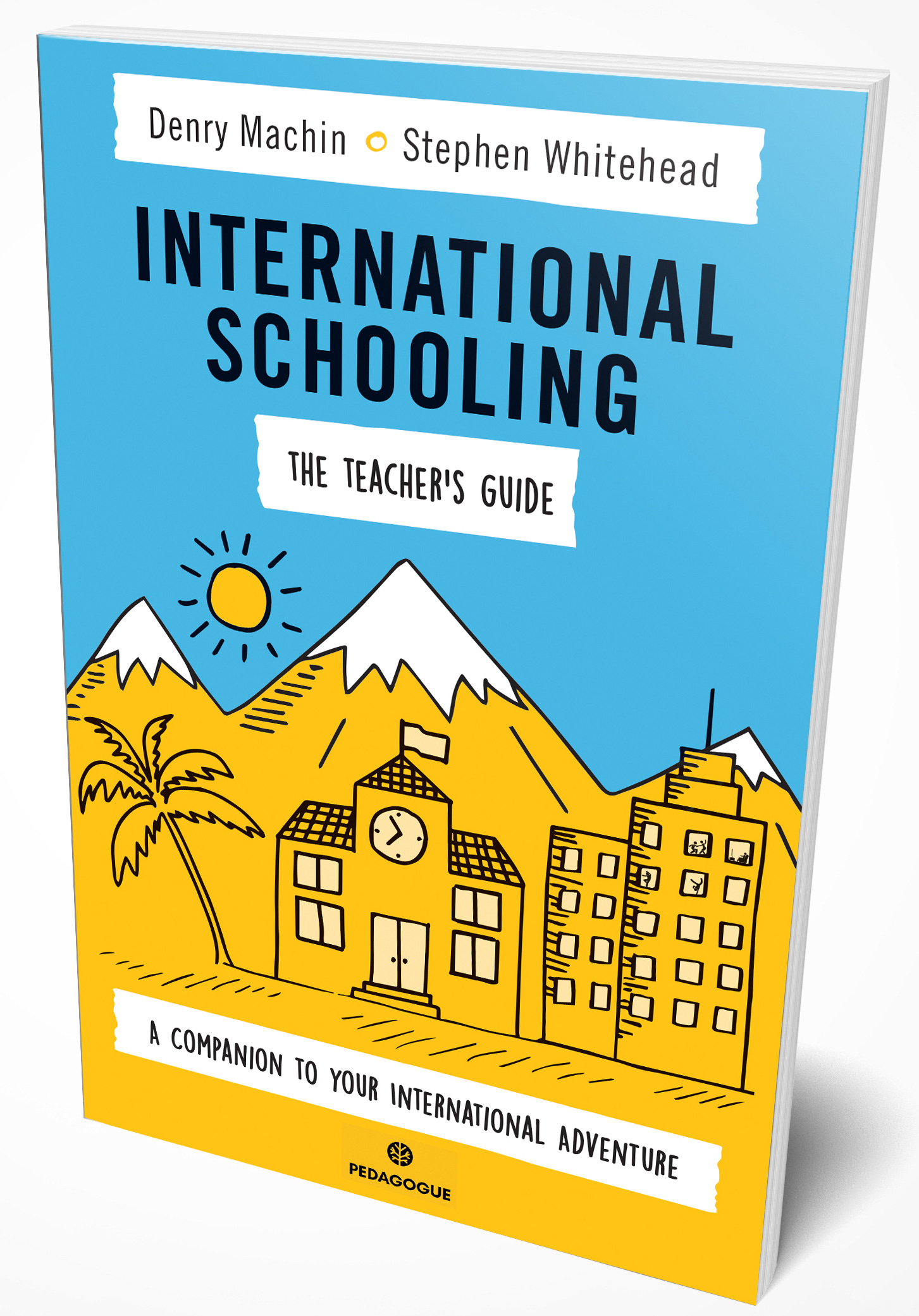EDDi XXVI
International Schooling: The Teacher’s Guide
Dear subscribers
This themed edition of EDDi is devoted to the world of international schooling and to the launch of our new book: International Schooling: The Teacher’s Guide
With over 11,000 international schools and at least four times that number claiming to be international by virtue of offering an education in English, international schooling has never been more prominent.
In this week’s ‘In Conversation’ piece we have an interview with ISC Research, arguably the most informed organisation in the world in terms of data on international schooling:
‘In Conversation’ with Sam Fraser, Head of Field Research, ISC Research
Yet, while a lot of attention has been paid to the growth in international school numbers, the actual teachers and their experiences can be overlooked. One of the aims of EDDi is to help address this knowledge gap, not least by providing summaries of academic research into international school teaching.
Now EDDi has gone a step further - or to be precise, the two founders of EDDi, Dr Denry Machin and Dr Stephen Whitehead, have done. And that step further has resulted in their newly published book:
You can find out more on the book’s website here and can grab a copy via:
Provided below is a digest of the first of the book’s four sections and an introduction to some of the key questions, themes and issues raised and addressed. We will cover sections 2, 3 and 4 in future EDDitions.
So please use this EDDi as an introduction to our new book and as an opportunity to reflect on many of the experiences which you, as an international educator, are regularly confronted with and which we aim to have addressed in International Schooling: The Teacher’s Guide.
Happy reading.
EDDi
THE BOOK: SECTION 1 SUMMARY
WHAT YOU NEED TO KNOW ABOUT INTERNATIONAL SCHOOLS

We all know what a school is.
For better or worse, we all attended a school of some form. As a reader of EDDi you are probably more familiar with schools than most. You probably work in one, have worked in one, or have some other direct association with schooling.
Why then a whole section of the Teacher’s Guide dedicated to defining international schools? Schools are schools, right?
Well, yes… and no.
As the book explores, international schools are not easy to define. They are varied in type, size, and scope. They are found in diverse locations and they offer different curricula. They exist for a multitude of reasons (some for historical reasons, some for practical reasons, and, more recently, some for profit) and often for very different purposes – and as the book explores, international schools don’t even share the same ideas about what an ‘international education’ actually is.
The book opens then with a look at international schools: what they are, why they exist, why they are growing in number, why and how they are different to state schools, and what curricula and educational philosophy they use/follow.
Chapters include:
There is no ‘typical’ International School
Two forces drive growth (and your career)
The same, but different: international schools and state schools
International Education:teaching global citizens
There is no ‘best’ curriculum
DIGEST
As the chapter headings above suggest, the overriding message of the section is:
Don’t go looking for a ‘typical’ international school because there isn’t one, and nor is there a typical international school curriculum.
But what is common to all international schools, and those thousands of independent schools which offer something akin to an international element through a foreign (usually English) learning pathway, is that they exist outside a state education system, at least in terms of funding.
Which means teachers experienced in state education employment and who find themselves in the (often) more profit-focused, entrepreneurial, and contractually-flexible international school world, must adapt to rather different culture. Sure, much is the same as in state education (e.g. teaching and learning, lesson planning, student well-being, classroom management and inspections) but fundamentally it is a lot different working in a school owned by a local business person than in a school under the control of a local Ministry of Education.
That said, most international school teachers will not need to trouble themselves over the strength of their school’s ‘bottom line’. There will be a Senior Management Team supported by accountants, doing that job. What they do need to consider though is that, whether for-profit or not, schools only survive on the strength of their place in an increasingly competitive global market for students.
This reality has been driven home during 2020, with Covid-19 causing mayhem across global education, and within international schooling especially.
At time of writing, international school job offers have plummeted across the globe; international schools in Western Europe and elsewhere are facing hard times due to the absence of both flights and Chinese students; countless number of teachers have not had their contracts renewed or, worse, suddenly found their new job disappeared along with classroom teaching; while some experienced professionals in the sector are predicting a ‘culling of international schools’ during the next year or so.
Only in China does the international school market remain robust, with job offers still “buoyant”. Though as ISC Research recently reported, of the 53 new international school campuses scheduled to be opened in China by September 2020, only 52% are going ahead as planned, while 22% have been delayed for 12 months and 22% postponed altogether.
But at least China is still expanding its international school provision, and given the continued strength of its economy, that growth looks secure for some time to come.
All this merely emphasises a singular truth which anyone deciding to teach abroad needs to be aware of, which is that market forces combined with globalisation creates the fuel which feeds this beast of international schooling. And to put that in perspective, ten years ago the total fee income from K-12 international schools was US$4.9 billion. In 2019, that had grown by 1,019% to US$54.8 billion (ISC Research, 2020).
You may therefore ask yourself, ‘is international schooling all about profit and income generation?’
The answer is no.
Profit and fee income merely ensures the teachers get paid at the end of the month.
As the book explains, what is truly driving this phenomenon are the aspirations of middle-class parents around the globe, and especially in Asia. Pretty much every international school anywhere on the planet will overtly or subtly suggest in their marketing and social media presence that sending your child to their school almost guarantees “they will become the global citizens and leaders of tomorrow.”
This is what drives international schooling – the desire to achieve cultural and social capital.
A few decades ago, international schools had one aim - to provide a (usually Western) education for the children of (most Western) expat families. That market has declined to near insignificance over the past decade. In some international schools today, upwards of 80% of international school students are locals.
All this makes for a rich, varied but unpredictable career journey for those willing and able to take on the challenge of international school teaching.
And the book is designed to help you on that journey.
GRAB YOUR COPY
A reminder that you can find out more on the book’s website here. And, you can grab a copy via:




